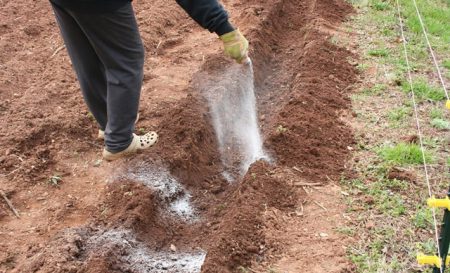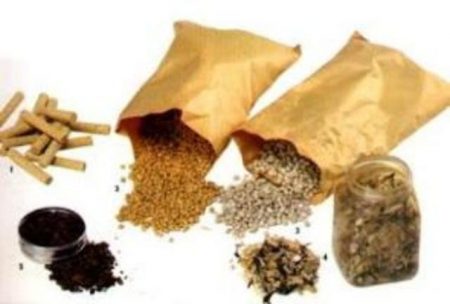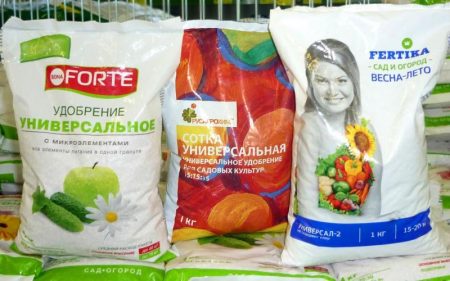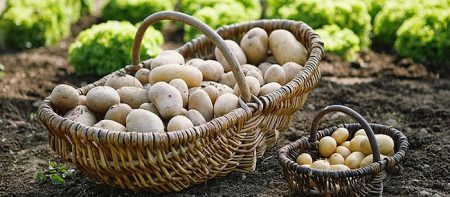 Remember how in the movie "Girls" the cute little Toska defended the potatoes and hotly proved how many dishes can be prepared from this wonderful root crop? But not many people know how to properly fertilize so that the potatoes are successful, why they get a very poor harvest, and do not want to plant a lot in their plots, preferring to buy in stores and in the markets. Learn how to fertilize potatoes to get the right good crop?
Remember how in the movie "Girls" the cute little Toska defended the potatoes and hotly proved how many dishes can be prepared from this wonderful root crop? But not many people know how to properly fertilize so that the potatoes are successful, why they get a very poor harvest, and do not want to plant a lot in their plots, preferring to buy in stores and in the markets. Learn how to fertilize potatoes to get the right good crop?
How to fertilize and when
In order to grow an excellent crop that pleases the heart of a gardener, you need to know what potato fertilizer you need to make when planting in a hole and during autumn digging. The most important thing for a good harvest is organic options. On heavy clay soils, it is recommended that humus be added since autumn; on light sandy soils, rotted manure, and in spring, add more compost. All this good must be dug up immediately, so that it does not weaken the fertilizer, and do not lose its useful qualities.
With general fertilization of the plot, a lot of funds are spent, therefore it is much more economical to deposit them directly into the holes during the planting of tubers. For this we need organic products along with minerals. Moreover, under early and late potatoes make different mixtures. This is due to the fact that early potatoes use nutrients very quickly, they need to be given wood ash with humus immediately, and manure with ash is brought into the wells with later varieties.
By the way, if you moles defeated - see how to deal with them in order to save the crop.
Mineral fertilizers - which are better?

The tubers need nitrogen, but keep in mind that in itself it gives a large green mass to the detriment of the growth of tubers, so it is important not to overdo it with it and at the same time add phosphorus and potassium. Under early potatoes, add potassium chloride with superphosphate, add ammonium nitrate - per square meter, not more than 60 g. If you immediately add fertilizers to the holes, reduce the dose by 2 times.
Bird droppings for potatoes are very good, but they cannot be used in their pure form - they will burn the tubers. It is better to dry, dilute 15 times with water, and then a liter per hole. For early potatoes, it is still good to make meadow peat with the addition of ash in autumn.
Siderates, which can completely replace manure, show themselves excellently. When you have plots of land vacated by autumn - sow mustard, lupine on them, if there is little wireworm and winter rye. Green mass, not leading to flowering, mow, chop, and dig. In spring there will be a wonderful field for planting potatoes and more. This is the cheapest type of fertilizer, natural and safe, after planting, nothing is required. Moreover, the potato usually immediately picks up what it needs and then nutrition is practically not needed.
See also how prepare potatoes for planting.
Do no harm!
Fertilizers are good, but in moderation. Because nitrogen, as we have already said, instead of tubers, in large quantities can only give you huge bushes, phosphorus in excess reduces the amount of starch, manure can lead to scab, the development of larvae of the May beetle, who adore young shoots of potatoes, etc. It is important to choose the right funds, because the soil is different for everyone, the climatic conditions also.
Complex fertilizers for potatoes

Many people prefer not to bother, and use complex preparations that have the best effect on the quality and volume of the crop.Some gardeners use Kemira Potato, for example. Yes, this is the ideal ratio of all nutrients, but its price is high, so many people prefer to get by with more affordable means. Bird droppings, composts, slurry, humus, wood ash give a full range of fertilizers for potatoes. Many speak well of the special fertilizer Bulba, which not only does it contain a good range of useful substances, also fights wireworm and is effective against late blight.
Wood ash and other fertilizers for putting into the hole
Many gardeners advise using ash - not from any wood, but from fruit trees. It contains a lot of minerals and trace elements, because it is incredibly useful not only for potatoes. Ashes can be sprinkled on tops on wet days so that rot does not form. In spring, do the pruning - dry the branches, then get an excellent ash for planting.
Prestige - when and how to apply for potatoes
You can use "Prestige" if you want to protect your crop, but only for late potatoes, for the early one it is not suitable at all, since the poison will not have time to leave, it takes 2 months to remove it. Yes, it will protect against wireworms, gluttonous larvae of the May beetle, fungi and rot, scab and Colorado beetle. But - you decide whether your crop needs such a risk.
How to fertilize potatoes - reviews

Anton: I bring manure from the farm every 3, or even four years, scatter and plow it in the fall, and for several years I don’t bother at all - the crop is excellent!
Marina: my uncle cuts potato bushes as soon as it fades, and the crop is always excellent, he says that it is this method that helps him to raise the crop so well.
Tamara: and I only use the Bulba preparation - I buy 5 kg of packaging. When planting in a hole, I throw in a little bit each - a wonderful, in my opinion, complex fertilizer, and no troubles!
Ivan: every year we put peat-filled compost into the holes with potatoes (directly on the tubers) - it has never failed! Well, we get rid of weeds on time, otherwise they pull all the juices on themselves, there is little left for potatoes.
Michael: I mix chicken droppings with foliage, ash, let it overtake in a barrel, and in the fall I fertilize the garden - a great tool! But ammonium nitrate is evil, it accumulates gradually in your body, I do not advise!
Summing up, we say that each soil requires its own approach, after listening to our advice and feedback from gardeners, you will draw the right conclusions and choose the best fertilizer option for potatoes when planting in the hole, and for autumn plowing of the earth.
Read more - growing potatoes wisely without weeding and hilling - a good harvest!




 Description and description of varieties in Belarus with a photo
Description and description of varieties in Belarus with a photo Do I need to pick flowers from potatoes: why do they do it
Do I need to pick flowers from potatoes: why do they do it When to dig potatoes: timing and availability of new potatoes
When to dig potatoes: timing and availability of new potatoes How to grow a good potato crop: various methods and methods, planting and care
How to grow a good potato crop: various methods and methods, planting and care